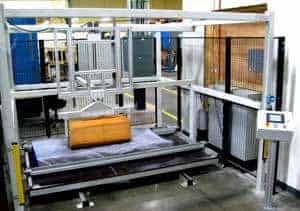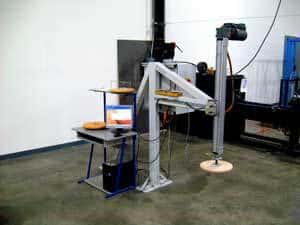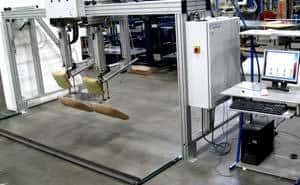By Bryan Stratton
The need to optimize product development processes is greater than ever. The competitive nature of the marketplace, combined with new government regulations, has led to a stronger emphasis on third–party testing and certification.
To speed the product approval process, manufacturers need to use best practices to make the most of the partnership between product engineers/designers and third–party testing providers.
Keeping communication open
Maintaining open channels of communication between the mattress manufacturer and testing lab is vital. It’s particularly important to have an open dialogue when identifying the objectives and goals of a project—and to maintain good communication throughout the entire testing process.
By fostering a shared understanding of expectations, a third–party testing company can work in partnership with a manufacturer to ensure that the mattress maker’s project objectives align with possible testing outcomes. Among other things, this allows testing engineers to take proper measures to eliminate test methods that don’t meet the manufacturer’s stated objectives and to document test results in a form that’s most useful for the manufacturer.
Consider the standard test method for evaluating the firmness, firmness retention, durability and effect of impact on innersprings, box springs, mattresses and mattress sets (ASTM F1566).
The method does furnish information such as height loss and change in spring rate and firmness, but there is no clearly defined value that determines compliance or noncompliance with the standard. Therefore, the results gathered from this test method are most valuable when interpreted and evaluated against goals and objectives the manufacturer and testing lab establish together prior to the start of the project.

Will it hold up? A Rollator is used to evaluate mattress durability for the ASTM F1566 Section 7 standard.

Getting the feel: Mattress firmness is evaluated to the ASTM F1566 Section 6 firmness rating standard.
Working with timelines
Prior to the start of testing, it’s crucial that the manufacturer provide the lab with an estimated sample arrival date. In return, the manufacturer should expect the testing facility to provide an estimated completion date based on that information.
To secure the fastest turnaround times, reaffirm the date as it nears and communicate with the lab if you realize that the date originally proposed is no longer feasible or optimal. Lead times can vary greatly depending on the laboratory size and its work volume. Proper planning is the best practice for avoiding delays and interruptions to a manufacturer’s production cycle.
At the start of a new project, it’s also important to identify and communicate to the lab any concerns related to the product being tested. For example, if a particular mattress stitch area or seam structure is known to be problematic, it’s important to disclose this information to the testing laboratory. This makes test engineers aware of specific areas they should focus on during the testing.

On the edge: The BS EN1725 Section 7.5 standard is used to test the durability of a mattress edge.
Preparing test samples
Sufficient test sample preparation is critical to saving time and money throughout the testing process. By making sure that the samples they provide are constructed appropriately for the tests to be performed, manufacturers will reduce delays that can be detrimental to a project’s timeline and budget.
When it comes to flammability testing, sample requirements can vary from a small section of material to an entire bed and base assembly.
For instance, when testing the flammability of a mattress exposed to an open flame (16 CFR Part 1633), an entire bed assembly—mattress and foundation—is required if the mattress and foundation are intended to be sold as a set.
But flammability testing for interior materials (FMVSS 302 ) requires only a sample 102 millimeters wide by 356 millimeters long and a maximum thickness of 13 millimeters.
Ask the testing lab to define the specific sample requirements in terms of size, construction and quantity prior to manufacturing the sample and sending it to the lab.
Inspecting test samples
Carefully examine the materials you’ll be testing before shipping them to a third–party lab. In addition to limiting potential delays, preshipment inspection often prevents common errors and defects that can lead to testing failure.
For example, before submitting samples for mattress flammability testing, the manufacturer should inspect the ticking—looking for cuts or tears—and make certain that all stitching is tight and complete.
When a mattress is put to the open–flame test, flames follow the path of least resistance to reveal even the most minimal defects that could allow fire to easily enter the mattress core. One missed stitch can be the difference between compliance and noncompliance when performing a flammability test.
Likewise, the manufacturer should confirm that the components used to make the samples being prepared for testing are exactly the same as the components listed on the bill of materials for that mattress model. It’s not uncommon to find that the cause of flammability test failure is a manufacturer forgetting to install the intended fire barrier.
Inspecting samples prior to shipment also provides the manufacturer with an opportunity to gain valuable information for future packaging/shipment procedures. When a sample arrives at the testing facility in an undesirable condition, manufacturers can use this information to improve future shipping practices.
To sum up
- Third–party testing and certification can be made easier by adopting a clear and methodical approach to identifying and communicating project goals and objectives.
- Clear communication between the manufacturer and the testing lab will help to guarantee a positive experience for both parties and facilitate successful achievement of the project objectives.
- Manufacturers will benefit from creating standard operating procedures for working with third–party test labs that will help to ensure all projects are completed on time and in the most efficient manner.
Find a testing lab
To find a mattress testing lab, check the online BedTimes Supplies Guide
The guide also appears each year in the December issue of magazine.
Bryan Stratton, engineering team leader, manages the mechanical strength/durability and flammability test labs for Intertek and is responsible for Intertek’s European and North American mechanical mattress and bed testing. Stratton has a bachelor’s degree in mechanical engineering and is pursuing a master’s degree in engineering management. He has been involved in various aspects of standards development across the furniture industry and sits on the Standards Development Committee of the Business and Institutional Furniture Manufacturer’s Association. He works out of Intertek’s office in Grand Rapids, Mich., and can be reached at [email protected] or 616–656–7416.
~~~
Please link to this page: Best Practices for Working with Testing Labs.




